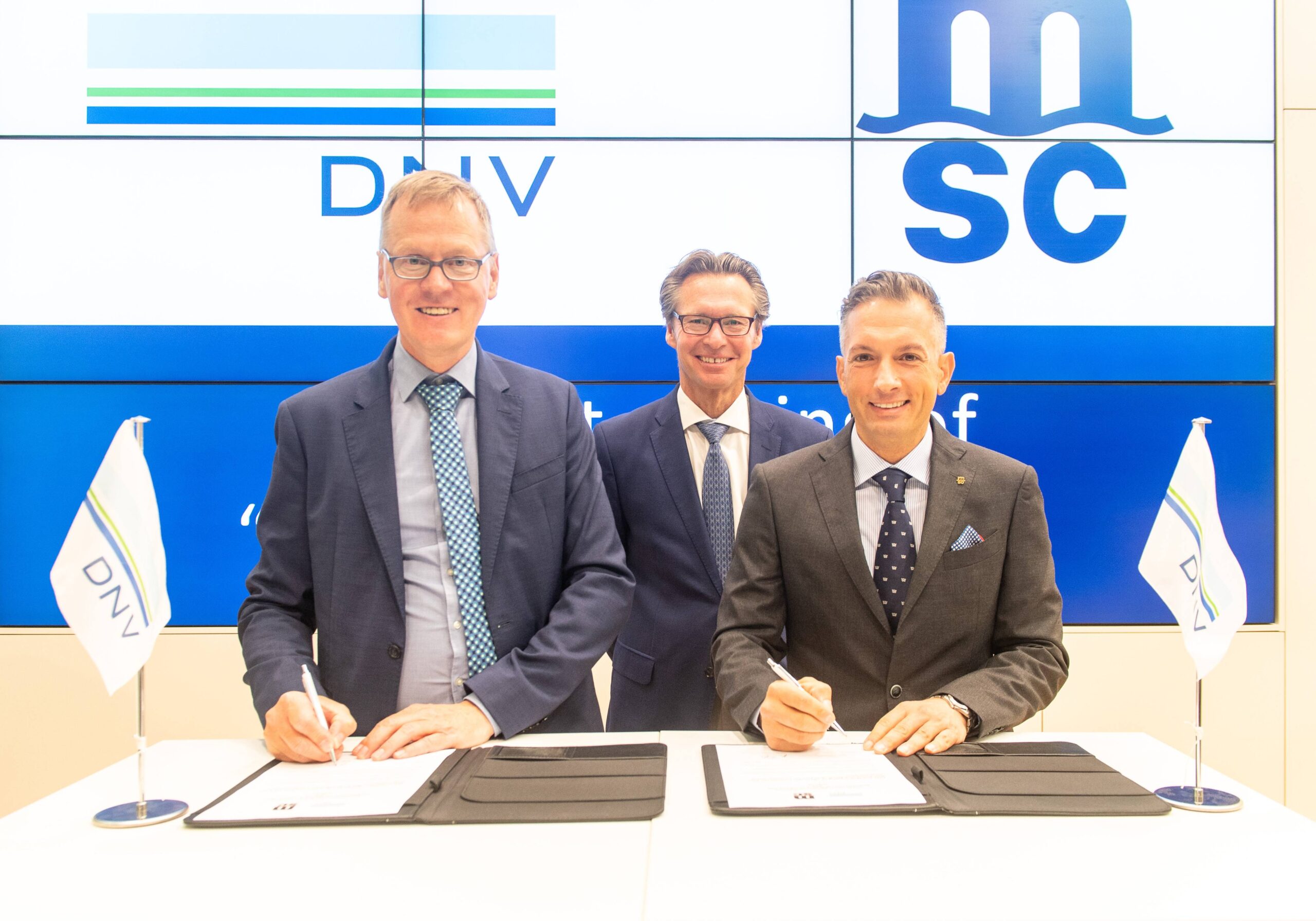Global container shipping line MSC Mediterranean Shipping Company (MSC) has signed a contract with classification society DNV that aims to address a growing problem within the maritime industry: lost containers at sea.
The deal, signed Wednesday at the SMM trade fair in Hamburg, will see MSC implement DNV’s new Anti-Roll Assist system and ARCS (Anti-Roll for Containerships) class notation in some 100 vessels, making it the first global liner company to install the application and implement a ship-specific tool to avoid container losses due to parametric or synchronous rolling.
Millions of containers are shipped safely across the world every year, forming the backbone of global trade and commerce. On rare occasions, a combination of environmental, navigational, design and vessel parameters combine to trigger synchronous and parametric rolling events that can exceed lashing limits, sometimes leading to container losses.
DNV’s new Anti-Roll Assist helps vessel captains to recognize and avoid the risk of parametric and synchronous resonant rolling. By using a ship-specific hydrodynamic database the system can provide a risk picture for the vessel, based on its heading, speed, loading condition and the environmental conditions.
MSC will be the first ship owner to implement the ARCS notation and will integrate the application in their onboard weather routing systems. The contract covers dozens of newbuildings, ships in operation, and vessels to be constructed, ranging in size from 1,800 to MSC’s largest vessels at some 24,000 TEU.
“At MSC the safety of our crews, vessels, and cargoes will always be our highest priority,” said Giuseppe Gargiulo, Head of Newbuildings at MSC. “We are always looking for new solutions to minimize risk and the new Anti-Roll Assist gives MSC a new tool that can empower our people both on-board and on-shore. By implementing the new application on our vessels captains and crew can both plan ahead and react in the moment when a potentially critical situation is identified – enhancing our safety culture. Implementing this into our current newbuildings is a natural first step and we look forward to continuing to work with DNV and build on our longstanding relationship going forward.”
“To have a company like MSC embrace this new solution, is incredibly gratifying,” said Knut Ørbeck-Nilssen, CEO Maritime of DNV. “We are very excited about the potential of Anti-Roll Assist and the ARCS notation to help our customers enhance the safety of their cargoes and vessels. I would like to thank MSC on behalf of the whole of DNV for their continued trust in our company. MSC’s forward thinking in integrating the application, once again demonstrates their continued leadership in moving the containership industry forward.”
“The combination of factors that lead to rolling which can result in container loss can be very hard to predict,” said Jan-Olaf Probst, Director Business Development Hamburg and Executive Vice President at DNV. “In developing the Anti-Roll Assist we wanted to give captains and crews a very clear and simple picture of the risk, based on a combination of crucial factors, including their vessel’s heading and speed. The application can also support the captain and crew in assessing if a navigational adjustment is required. Additionally, through the integration of advanced weather models, Anti-Roll Assist can be used to determine the best route to avoid extreme motions during route planning, helping to optimize ship operations.”
Anti-Roll Assist can stand alone or be integrated into other onboard systems, such as lashing computers, weather routing tools or navigation systems. This is supported by the ARCS class notation which enables shipowners to demonstrate to their customers that a strategy to minimize the risk of container loss is in place. Owners can meet the requirements of the ARCS class notation by implementing a software solution which meets designated functional, technical and performance requirements, particularly a stringent hydrodynamic approach to calculating the risk.



